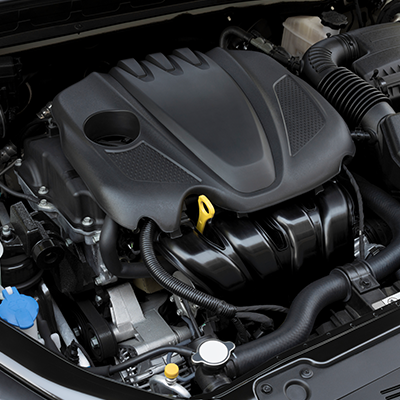Engine head gasket replacement

The cylinder head gasket seals the joint between the cylinder head and the engine block. It is exposed to extreme temperatures and high pressure. The most common cause of its failure is engine overheating resulting from a cooling system malfunction, wrong coolant in the system or too dynamic driving. The most frequent initial causes of its failure are the loss of the coolant and unstable engine operation on starting. If you ignore these symptoms you run the risk of burning the gasket altogether and seizing the engine. Replacing the gasket requires dissembling the engine and resurfacing the cylinder head. The repair is complicated, time-consuming and costly.
Tips
- Check the engine temperature gauge
- Check the coolant level regularly
- Use only gaskets from reputed manufacturers
Scope of services
- Draining the cooling system
- Removing the engine covers and the belt
- Removing the camshaft cover, the manifolds and the timing gear
- Disconnecting the engine block and the cylinder head
- Replacing the gasket and the seals
- Refitting the previously removed elements
Find a car workshop
Check out our workshops that offer the service engine head gasket replacement in some of the biggest cities in your country
Additional info about the service
What is the cylinder head?
The cylinder head is mounted in the upper part of the engine block and closes in the cylinders and the pistons. It also serves as a body in which the valve mechanism operates, and in which sit spark or glow plugs, as well as a number of other components. A special gasket is fitted between the head and the block, which seals the cylinders, as well as the oil and cooling channels running through the head.
When should the cylinder head gasket be replaced?
If the gasket is burnt, e.g. as a result of engine overheating, or if the head requires removing for repair, the gasket must be replaced with a new one.
How is the cylinder head gasket replaced?
First, the timing drive mechanism is removed, followed by all other parts which may stand in the way, such as the rocker cover, spark plugs, oil pressure and coolant temperature sensors, etc. Next, the bolts holding the head are unscrewed and the head is removed from the engine block. The head is checked on a special inspection stand for tightness. Its mounting surface, which must be perfectly even, is controlled and, if necessary, subjected to mechanical processing. The engine block surface is cleaned off of the old gasket leftovers, following which a new gasket is fitted.
What else to keep in mind?
Fitting the head requires application of new bolts, as they stretch during tightening and are not suitable for reuse. After tightening the bolts in the right order and with the right torque, the previously removed elements, such as the rocker cover with a new gasket, all sensors, spark plugs, electrical cables, pressure hoses, etc. are fitted back into place. Subsequently, the timing drive mechanism is fitted - if it is a belt, then it, too, should be replaced.